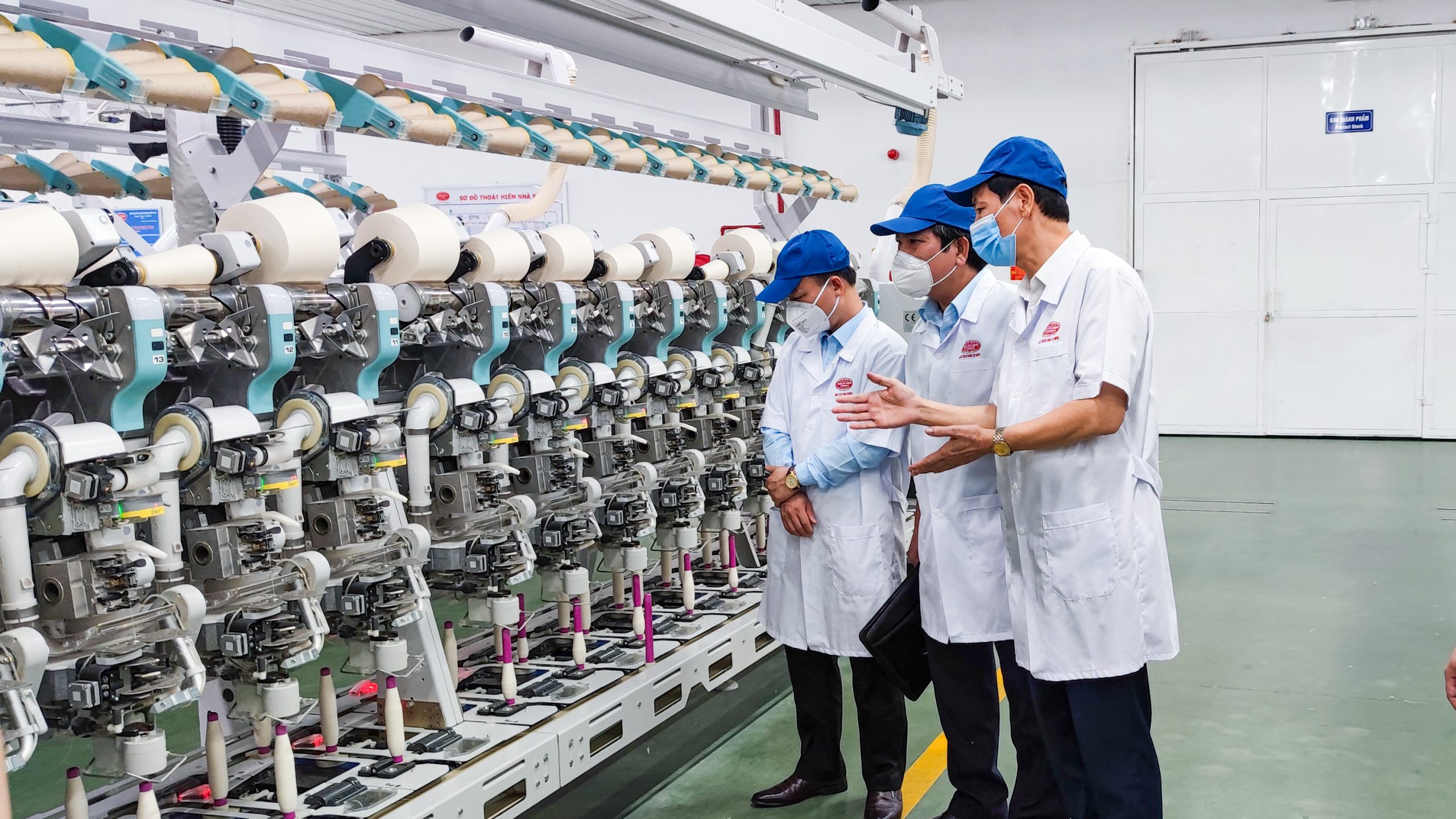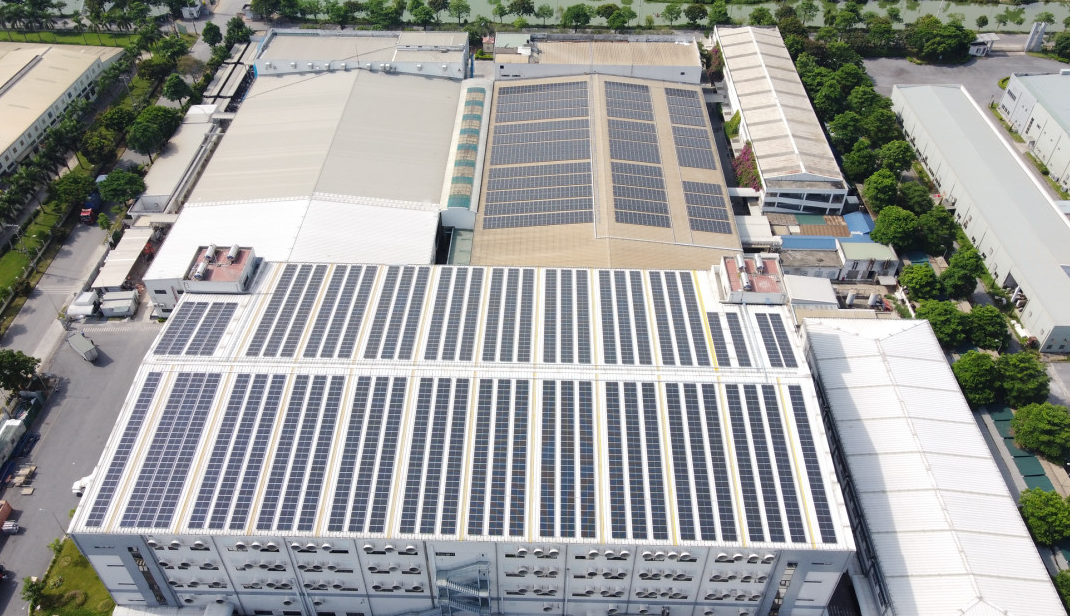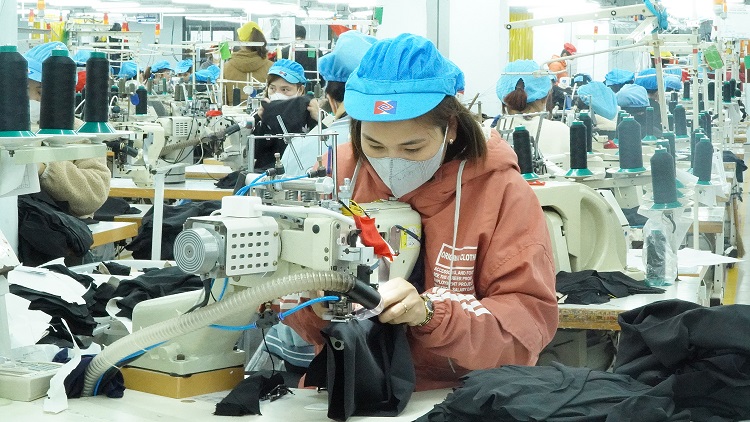Scaling Up Energy Efficiency Models in the Textile Industry
Thứ ba, 15/10/2024 - 13:35
With the potential to save about 20% of energy consumption, textile enterprises increasingly focus on implementing energy-saving solutions.
Energy savings to enhance competitiveness
According to the Vietnam Textile and Apparel Association (VITAS) and the United States Agency for International Development (USAID), the textile industry spends approximately 3 billion USD annually on energy consumption. Statistics show that textiles account for about 8% of the energy demand in the entire industrial sector and emit around 5 million tons of CO2 annually.
Mr. Hoang Van Tam, Head of the Climate Change and Green Growth Team at the Department of Energy Efficiency and Sustainable Development, Ministry of Industry and Trade, stated that energy savings and environmental protection are among the significant challenges for the textile industry in accessing markets. As the sector integrates globally and tariff barriers are removed, non-tariff barriers—trade obstacles—are becoming increasingly prominent for the textile sector.

Textile enterprises strive to reduce emissions from production activities.
Using energy efficiently and adopting renewable energy to reduce greenhouse gas emissions are seen as both opportunities and challenges for Vietnam’s textile industry. Some major markets, such as the U.S. and the European Union, are implementing carbon labeling regulations, requiring importers to meet specific carbon emission standards throughout the production process.
As a result, textile manufacturers need to invest in modern production technologies, adopt cleaner production methods, and save energy to enhance the competitiveness of their products for export.
| The textile industry is one of Vietnam's key industries, employing about 3 million workers. It is experiencing strong growth, with exports reaching USD 40.3 billion in 2023, and is expected to achieve the target of USD 44 billion in exports by 2024. |
Dr. Le Xuan Thinh, Director of the Vietnam Cleaner Production Center (VNCPC), noted that Vietnamese textile enterprises have been innovating to keep up with global trends in the industry. Besides enhancing production capacity and securing raw material sources, companies have also upgraded technology to save energy and meet the standards of sustainable production and consumption. However, the potential for energy savings in the textile industry remains significant, at around 20%. This figure requires businesses to continue implementing energy-saving solutions to reduce input costs and increase their competitive advantage.
Enterprises actively saving energy
Huong Sen Comfor Yarn Textile Co., Ltd. (Dong Hai Industrial Cluster, Quynh Phu, Thai Binh), which operates in the production of high-end yarn with a total capacity of 73,000 spindles, serves both domestic and international markets. Alongside product development activities, the company always prioritizes energy-saving solutions and environmental protection, aiming for green growth.
Mr. Tran Huu Vung, Head of the Electrical and Air Conditioning Department at Hương Sen Comfor, stated that to use energy efficiency and conservation, the company has invested in advanced, modern, and highly automated production lines, leading the textile industry. These include the combing line, blending machine, and roving machine from Rieter (Switzerland); the drawing frame from Electrojet (Spain); and the winding machine from Savio (Italy).
Mr. Tran Huu Vung, Head of the Electrical and Air Conditioning Department at Hương Sen Comfor, stated that to use energy efficiency and conservation, the company has invested in advanced, modern, and highly automated production lines, leading the textile industry. These include the combing line, blending machine, and roving machine from Rieter (Switzerland); the drawing frame from Electrojet (Spain); and the winding machine from Savio (Italy).
"Despite the high initial investment cost in production technology, the company has seen the benefits of electricity savings during operation. Specifically, the company invested in an energy monitoring system. All reports on daily power consumption are updated in real-time and generated as reports to be sent to the statistics department. Data from this energy monitoring system shows that the company’s production lines consume very little electricity", Mr. Vung added.

Huong Sen Comfor Yarn Textile Co., Ltd. has invested in advanced, modern, and energy-efficient production lines.
To reduce reliance on the national power grid, the company has operated a rooftop solar power system with a capacity of 2.2 MWp, supplying part of the electricity for its Factory 1 and Factory 2. During peak hours, this rooftop solar system can fully meet the electricity demand for Factory 1, with an average output of about 10,000 kWh/day.
Energy-saving solutions for the lighting system have been implemented in the factory area, where high-efficiency LED lights are used, with lights segmented by production stages to allow for partial shutdown when demand decreases. Additionally, the entire office and workshop block is designed with glass walls to maximize the use of natural light.

High-efficiency LED lights are used in the factory lighting system at Hương Sen Comfor Yarn Textile.
At Star Fashion Co., Ltd., a member of Crystal International Group, energy-saving is always emphasized alongside production development and improving employee welfare and income.
Ms. Do Thi Ngoc Bich, Director of Human Resources and Sustainability at Star Fashion Co., Ltd., shared: "Energy saving is not only a sustainable development strategy of Crystal Group but also a sustainable development strategy of our company. Currently, Star Fashion Co., Ltd., along with Crystal Group, has set a goal to reduce absolute emissions by 35% by 2030 and achieve net-zero emissions by 2050. Annually, the company allocates a budget for energy-saving activities. In 2024, the company has budgeted 1 billion dong for energy-saving initiatives".
Ms. Bich added that to use energy efficiently, the company has installed solar panels at Workshops 1 and 3, saving VND 4.14 billion per year and reducing CO2 emissions by 1,083 tons per year.

Rooftop solar panels installed at Workshops 1 and 3 of Star Fashion Co., Ltd.
Additionally, the company has installed inverters to control high-capacity air compressors, ensuring reliable operation and minimizing energy costs, tailored to the needs of each production area. Air dryers and air ducts have been installed to reduce air temperature and energy losses. A central air-conditioning system was installed to replace individual units, ensuring proper cooling for all required areas while cutting down on energy consumption. The company also replaced 400 standard sewing machine motors with energy-efficient servo motors, switched old fluorescent lights to energy-saving LED lights and installed sensors for lights in public areas such as restrooms and stairwells.
In addition to investment solutions, the company also implements various communication measures to raise awareness among employees, such as displaying energy-saving posters in all areas of the factory and conducting annual training on energy-saving practices for employees. The maintenance team patrols daily to detect and promptly address any leakage points.

Star Fashion Co., Ltd. has invested in servo motor sewing machines to save electricity.
Honoring businesses leading in energy-saving efforts
One of the key strategies for companies to maintain low production costs and survive in a competitive global market is to apply efficient management practices and implement energy-saving measures throughout their production and business operations. The energy-saving solutions adopted by energy-consuming facilities in recent times have yielded significant results, helping to reduce greenhouse gas emissions, protect the environment, demonstrate corporate social responsibility, and contribute to national energy security.
Duc Do
